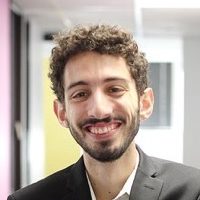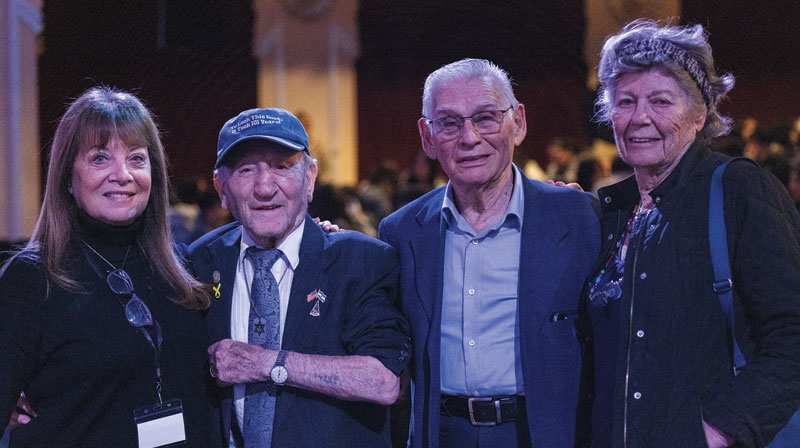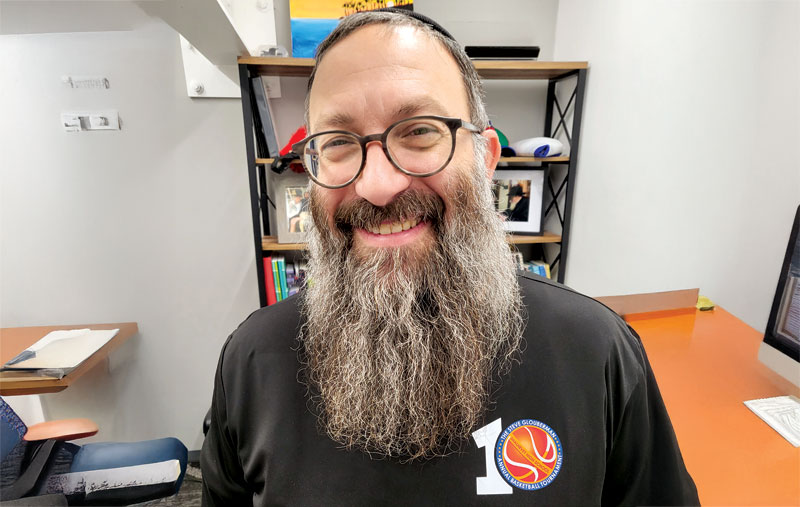
Sitting in her car in Orange County as she prepared to buy heroin from her drug dealer in 2015, Amy Green called out to her Creator.
“I was like, ‘I need help. I can’t. I’m scared,’ ” she recently recalled. “I said this out loud. I was talking to God out loud. I’m like, ‘God, I can’t do this, I can’t.’ ”
She paused, took a breath and continued, her voice soft and toneless.
“But I did, for the next eight months,” she said in an interview with the Journal.
For Green, now 28 years old, the use of a prescription painkiller to treat a sports-related injury had quickly morphed into a full-blown addiction that progressed into her use of black-tar heroin. The downward spiral was something she never could have envisioned as a Division I college athlete in soccer and track from a well-to-do Santa Clarita family.
Opioids are now poised to overtake car accidents as a leading cause of accidental fatalities in the United States — with 90 deaths a day from overdoses, according to the National Institute on Drug Abuse.
Last week, President Donald Trump said he planned to declare the opioid epidemic a national emergency, which would open the way for more federal funds to fight it. And though the crisis often has been characterized as ravaging rural areas and small towns, which provided much of Trump’s support in the November election, the powerful class of painkillers is also on the rise in urban Jewish communities.
In other words, nice Jewish boys and girls are no more immune to the epidemic than anyone else. In fact, for those living in affluent, tight-knit communities, the problem can be compounded by the pressure to keep up appearances.
“It was really scary, and I didn’t want to be doing it anymore,” Green said of her drug habit, “but I didn’t know how to reach out for help, because it was really shameful.”
Harriet Rossetto, co-founder of Beit T’Shuvah, the West Los Angeles addiction treatment center with an almost entirely Jewish clientele where Green is now an alumna and employee — she directs its mind and body program — confronts the stigma of opioid addiction on a regular basis.
“Jews are not exempt,” Rossetto said. “It’s part of our denial system that we often feel exempt from these kinds of social problems.”
Four of every 10 residents at Beit T’Shuvah’s Venice Boulevard campus are there because of opioids. Rossetto said the opioid addicts she encounters generally fall into two categories: Patients in their 30s, 40s and 50s who progressed from prescribed painkillers into addiction, and patients in their teens and 20s who used opiates like heroin as a way to numb emotional pain caused by trauma, sexual abuse, learning disabilities or other factors.
The prevalence of Jewish opioid abuse is evident at other treatment centers in the Los Angeles region as well.
At the Chabad Residential Treatment Center in the Miracle Mile, two-thirds of the residents — most of whom are Jewish — are there for opioid abuse, and they have tended to be younger in recent years, said Donna Miller, the center’s director.
Clare Waismann, a certified addiction treatment counselor and founder of the Waismann Method for opiate detoxification, said the detox program she runs at a non-Jewish-affiliated Orange County hospital (she asked that it not be identified), has been fulfilling more requests for kosher meals than ever before.
The problem is an increasingly fatal one.
Adina Stern, a Beit T’Shuvah resident, can rattle off the names of young Jewish women she has known who have died of drug overdoses. The most recent casualty was Malky Klein, a 20-year-old Chasidic woman whose death on June 24 ignited a flurry of coverage in Jewish media and beyond.
Stern, 20, is the youngest of 10 children from an ultra-Orthodox family in New York City. Her childhood was marked by trauma and sexual abuse, she said, and she started using heroin when she was 12. In the course of multiple recovery programs and relapses, she met other young women much like herself, with similarly troubled pasts.
“The common denominator among all the girls who are struggling with addiction and the girls who have died is really just being taught that we, as who we are, are not good enough,” she said. “We didn’t have our own identities so we became drug addicts. That was our identity. We were the bad girls of Brooklyn.”
The pressure of community and family expectations is not limited to the Orthodox.
Rusty, 29, a Beit T’Shuvah alumnus and employee who asked that his real name not be used, said he grew up in a Calabasas community where neighbors competed to display signs of their affluence. He attended a Reform synagogue, where he was confirmed, and felt he was a role model for younger kids in the congregation.
After his father died in 2008, a friend offered him the painkillers OxyContin and Fentanyl to help numb his psychological and emotional pain. He soon became addicted. And when he couldn’t get those drugs, he moved to heroin, he said.
Rusty completed college and earned a master’s degree while battling his addiction. As long as he was able to keep up appearances, he said, he didn’t see his substance abuse as a problem.
“It’s not like I was strung out in the gutter,” he said. “I had it all together on the outside, and then having this massive secret created this split where the only way I could survive was to dissociate entirely because I had to present a certain way to everyone else.”
He said his desire to save face kept him from seeking treatment.
“It was hard for me to reach out for help because it’s just not something that’s discussed, and there’s this implicit shame around it,” he said.
Rusty said he has seen the shame around drug abuse in L.A.’s Jewish community reduced by the growth of prevention and treatment programs and addicts’ increased willingness to discuss their problems.
Morris Treibitz, a resident at the Chabad treatment center, agreed that there is now less stigma around drug abuse. “You can’t deny how many people are dying anymore,” he said while sitting in the center’s chapel.
He encouraged parents to be more open with their children about drug abuse.
Treibitz, 42, a native of New Jersey, has come by his wisdom on this topic through bitter experience. He said he first started using heroin in prison after he was convicted for armed robbery at the age of 21, and his drug habit led to other convictions and prison terms.
Owning up to an addiction is a small price to pay to avoid incarceration or worse, he said.
“You can’t save your face and your tuchus at the same time,” he said. “You have to choose one or the other, and if you’re going to try to save your face, you’re not going to make it. You can’t do it.”























 More news and opinions than at a Shabbat dinner, right in your inbox.
More news and opinions than at a Shabbat dinner, right in your inbox.